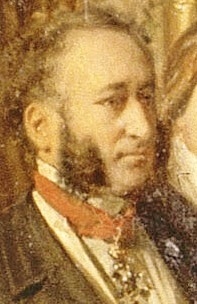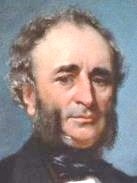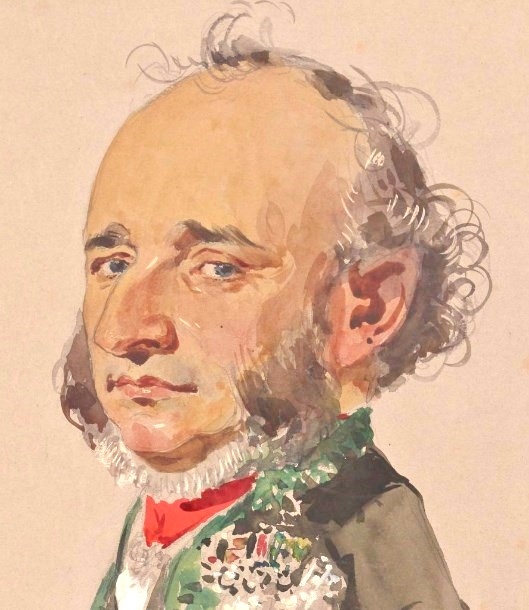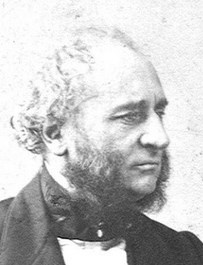Antoine Joseph Jobert de Lamballe (1799-1867), surgeon
First image: Soirée, 2nd: painting by Giraud (1860), 3rd: caricature by Giraud at Jobert's visit to Nieuwerkerke's soirée on April 27, 1860, 4th: Hoyt (c.1860).
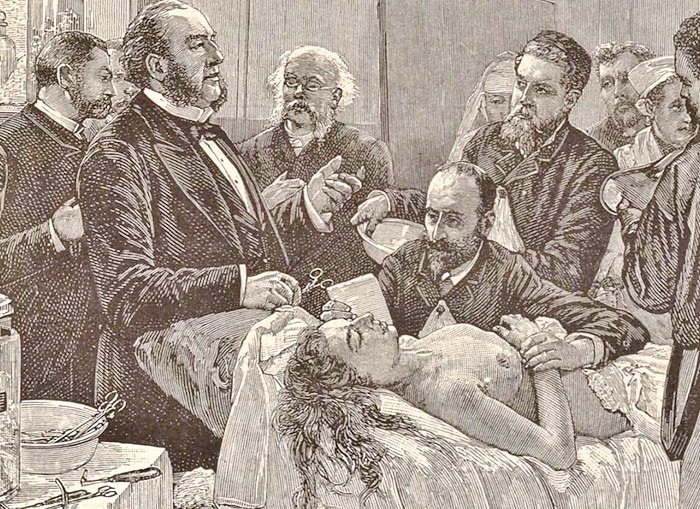
Born in the hamlet of Lamballe near Saint-Brieuc in Brittany, Jobert came from humble origins. At 19, he traveled to Paris as an intern to study medicine, where his exceptional skills in anatomy and surgery earned him prestigious appointments. He became the physician-surgeon to King Louis-Philippe, a professor of surgery at Hôtel-Dieu, and later the first surgeon to Napoleon III and Empress Eugénie. In 1856, he played a crucial role in assisting the difficult birth of the royal prince, administering chloroform to facilitate forceps delivery.
Jobert reached the esteemed rank of Commandeur in the Legion of Honor, marked by the red ribbon (cravate rouge) around his neck, in June 1849, and was inducted into the Academy of Sciences in 1856. His contributions extended beyond anesthetics; he was a pioneer in intestinal, urological, gynecological, and plastic surgery. Several surgical techniques bear his name, including sign Jobert, suture Jobert, and trident Jobert, reflecting his lasting impact on modern medicine. Already in 1833, he made a “description d’un speculum à bascule”, a gynecological device that remained unchanged for almost one hundred years.
Tragically, Jobert contracted syphilis in 1859 while surgically removing a tumor from a patient. As the disease progressed, he suffered significant cognitive decline, ultimately losing his memory. Surrounded by his devoted pupils, he passed away in 1867, leaving behind a legacy of surgical innovation that continues to influence medical practice today.
